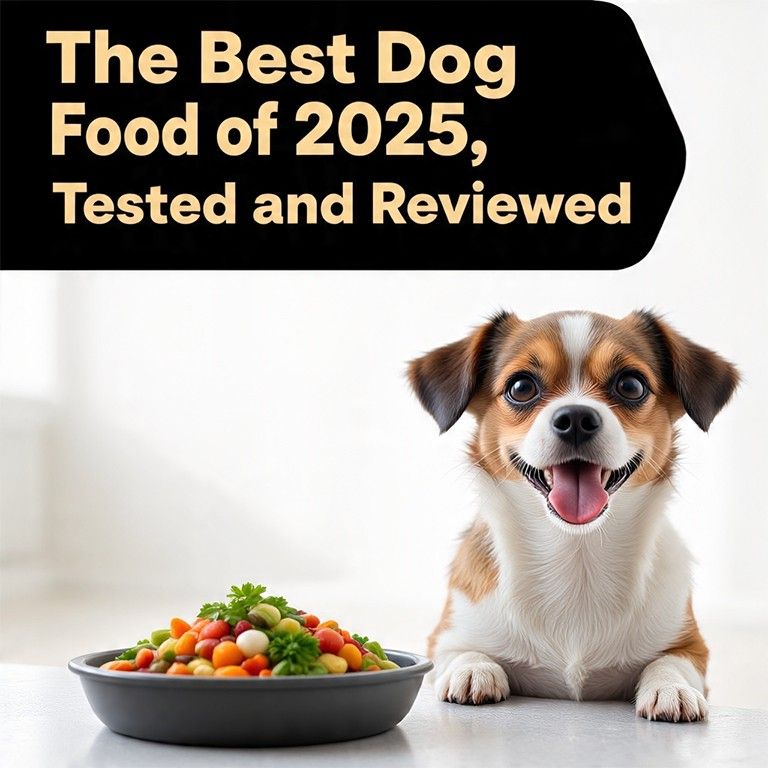The Best Dog Food of 2025, Tested and Reviewed

In May 2025, a well-known group of veterinary experts ranked freshly prepared, slightly cooked foods at the very top of canine nutrition for the year. Among the top contenders for the Best Dog Food 2025, they evaluated brands based on high-quality ingredients, palatability, and customizable formulations. NomNom claimed the top spot as the clear leader, thanks to its endorsement from veterinary bodies.
It stands out by fully complying with safety standards, offering ingredient traceability, and openly sharing its food sourcing practices. Modern pet owners increasingly choose brands that list ingredients clearly and follow human-grade preparation methods.
Fresh dog food appeals to many because it’s minimally processed. Veterinary nutritionists emphasize that low-temperature cooking helps retain nutrients and improves digestibility compared to conventional heat-extruded kibble. Dogs on fresh diets often show shinier coats, higher energy levels, and fewer digestive issues. This positions fresh meals as a strong contender for the Best Dog Food 2025, especially among pet parents who treat their dogs like family and seek wholesome alternatives.
Nom Nom prepares each ingredient separately before combining and freezing them to preserve nutrients. The brand offers six recipe options, including chicken, beef, and pork, along with tailored meal plans. Its meals display visible whole foods that look fresh and taste great—even to picky eaters. Thanks to its nutrition-first approach, Nom Nom ranks high among expert picks for the Best Dog Food 2025.
Customers can manage their meal subscriptions, pause deliveries, or increase and decrease portion sizes from the digital dashboard. Their veterinary nutritionist team also provides consultations for proper macro and micronutrient provision for pets.
In a test scenario, dogs consuming Nom Nom meals became much more hungry and lively. One case study narrated that a six-year-old Shih Tzu named Cloud was much livelier and enjoyed eating in the company of Nom Nom as opposed to other brands that Cloud had tested with; Nom Nom also produced better and more consistent stools.
The owners noticed almost complete elimination of food-related allergy issues and an enhancement in dental health due to better chewing behavior. The meals are shipped fresh with dry ice, so the products remain safe for consumption until they can be refrigerated.
The farmer’s dog and Ollie seem to follow Nom Nom in terms of popularity. These brands, too, provide vet-designed, pre-portioned meal plans with cost-free delivery. The Farmer’s Dog seems eco-conscious for the biodegradable packaging. Ollie seems to cater to pet parents who require specific dietary solutions like for weight control, arthritic joints, or skin sensitivities.
When the choice is dry kibble, three names come up repeatedly: Open Farm, Jinx, and Redbarn, for their purported protein-rich, clearly laid out recipes. Taste of the Wild is commonly regarded as the best-dry brand by many because of its unorthodox protein sources such as roasted bison and roasted lamb and maintaining grain-free formulations with digestible vegetables.
Settings would rather avoid synthetic additives; more so, they include natural sources of omega-3 and omega-6. Certain dry formulas also come packed with glucosamine and chondroitin for joint support. That, especially, is for older dogs that need all the help they can get!
Moving down the long list of top dog foods for the year 2025, Blue Buffalo Life Protection, Purina Pro Plan, NUTRO Natural Choice, and IAMS would all rate equally on price, ingredient quality, and availability. These foods typically include probiotics or antioxidants, while other brands may have a death blend featured for skin and coat, digestion, or immune support. Most of them also offer special formulas for puppies, senior dogs, and dogs with food sensitivities, giving consumers priced choices more than peace of mind.
Simply put: fewer vets would endorse anything they consider as empty fillers. Those foods meeting nutrient standards as defined by AAFCO and listing whole-food animal proteins as the number-one ingredient, with no fillers such as corn, wheat, or soy, or artificial preservatives, would be acceptable.
Owners would then have to think about the life stage the dog is in, its breed size, and activity levels, plus any health issues deemed allergies or sensitivities. Regular visits to the vet would spot any nutritional deficiencies early on. Some parents like to do protein rotation or offer a fresh topper to keep their dogs entertained.





